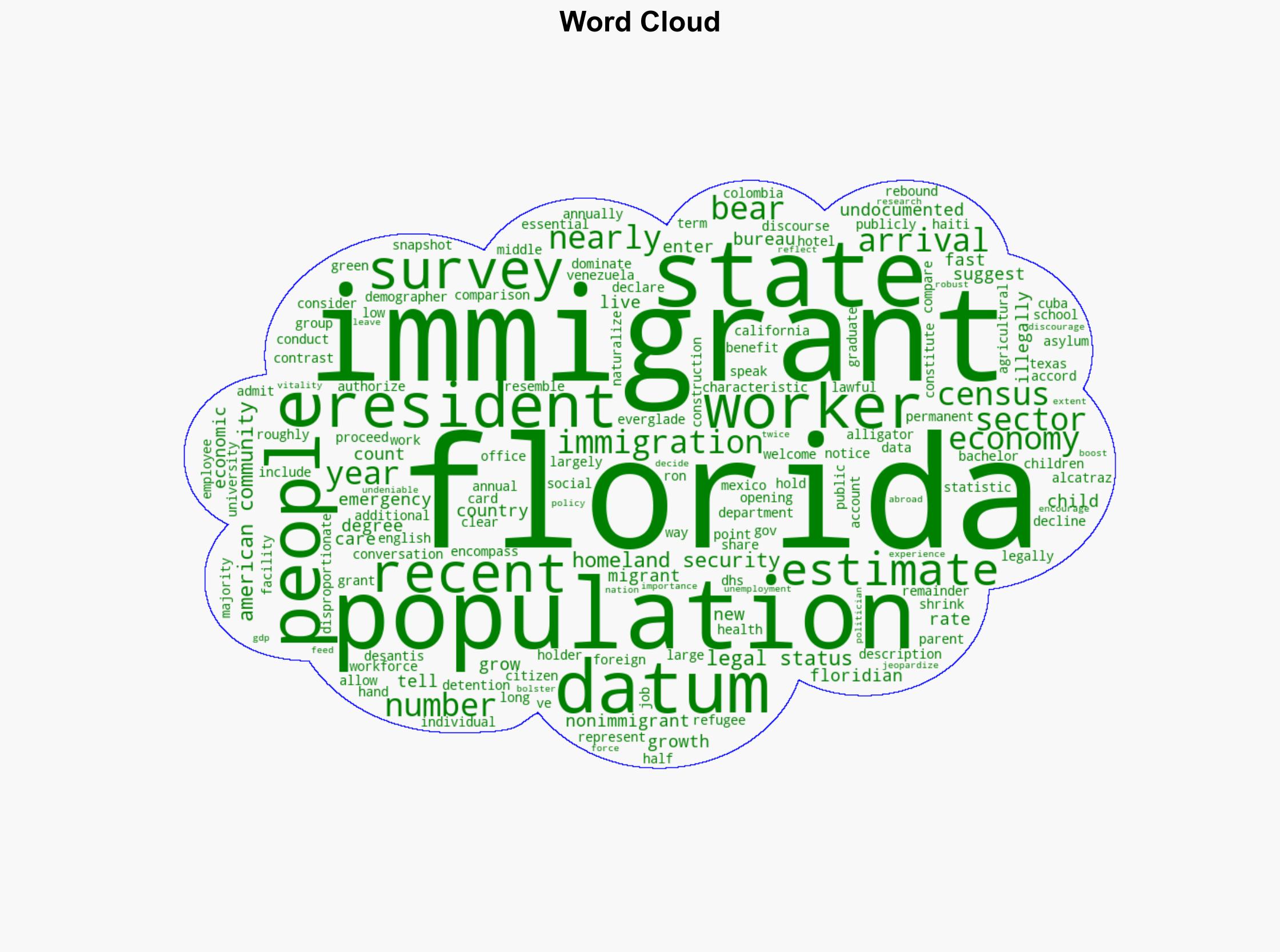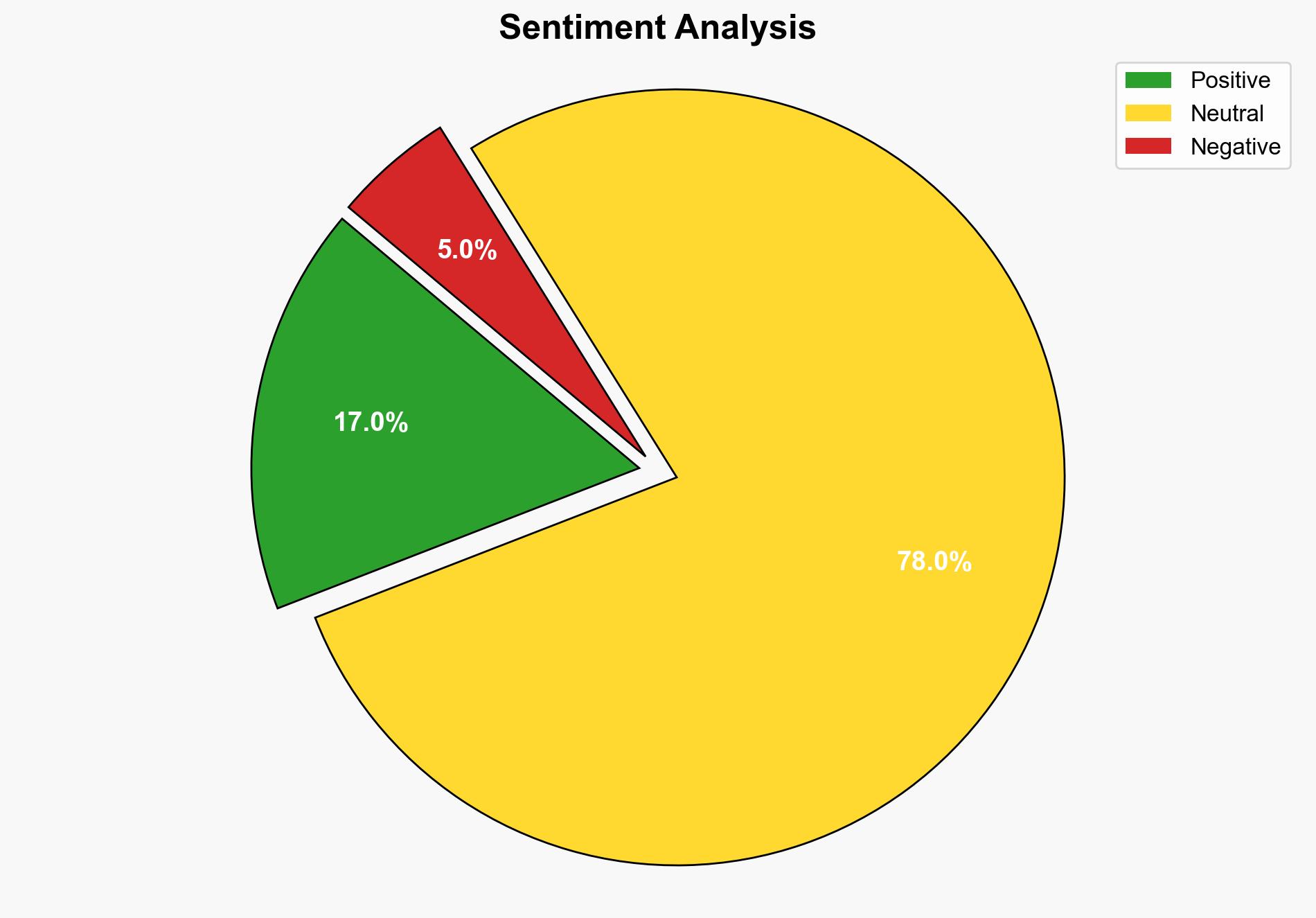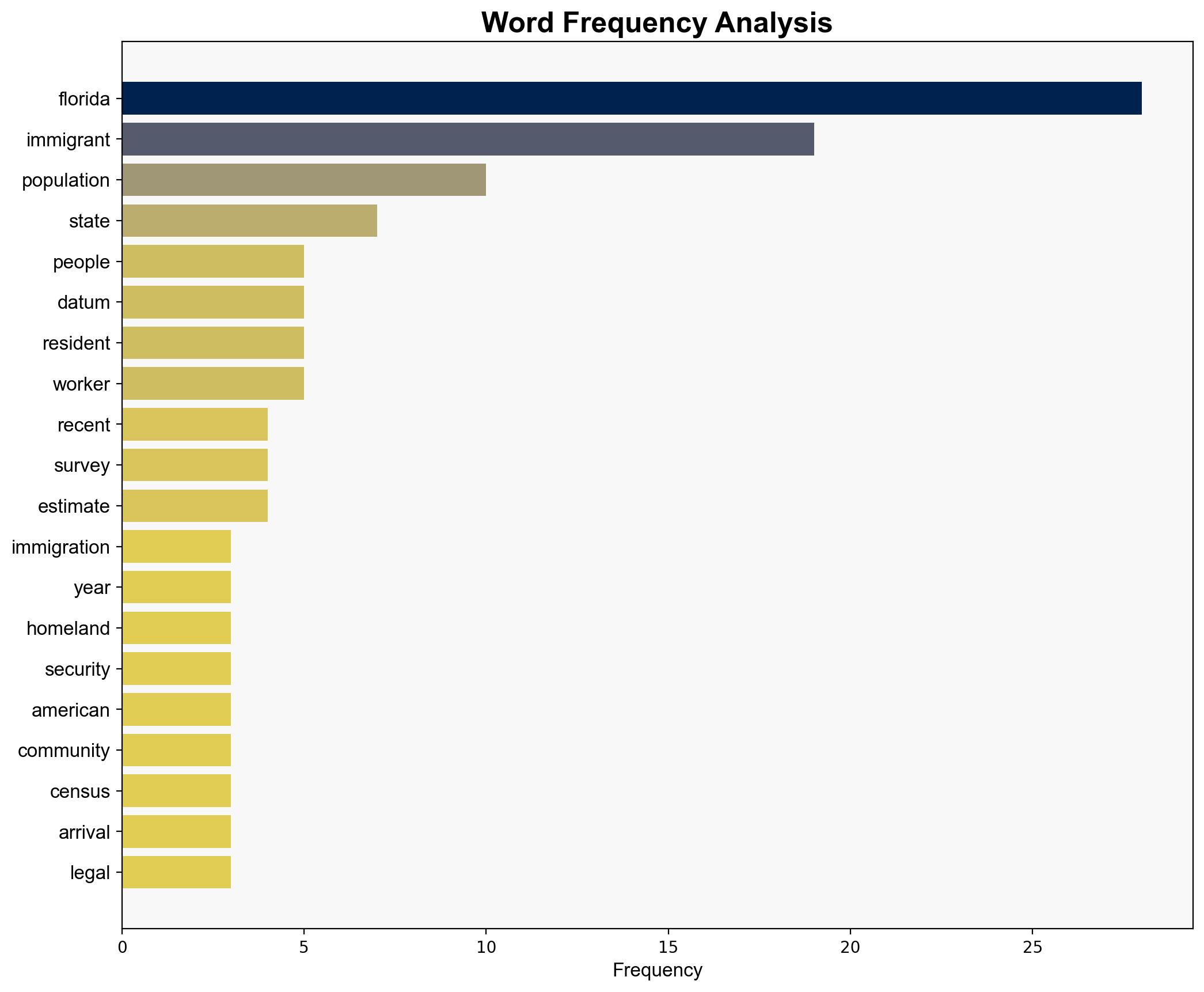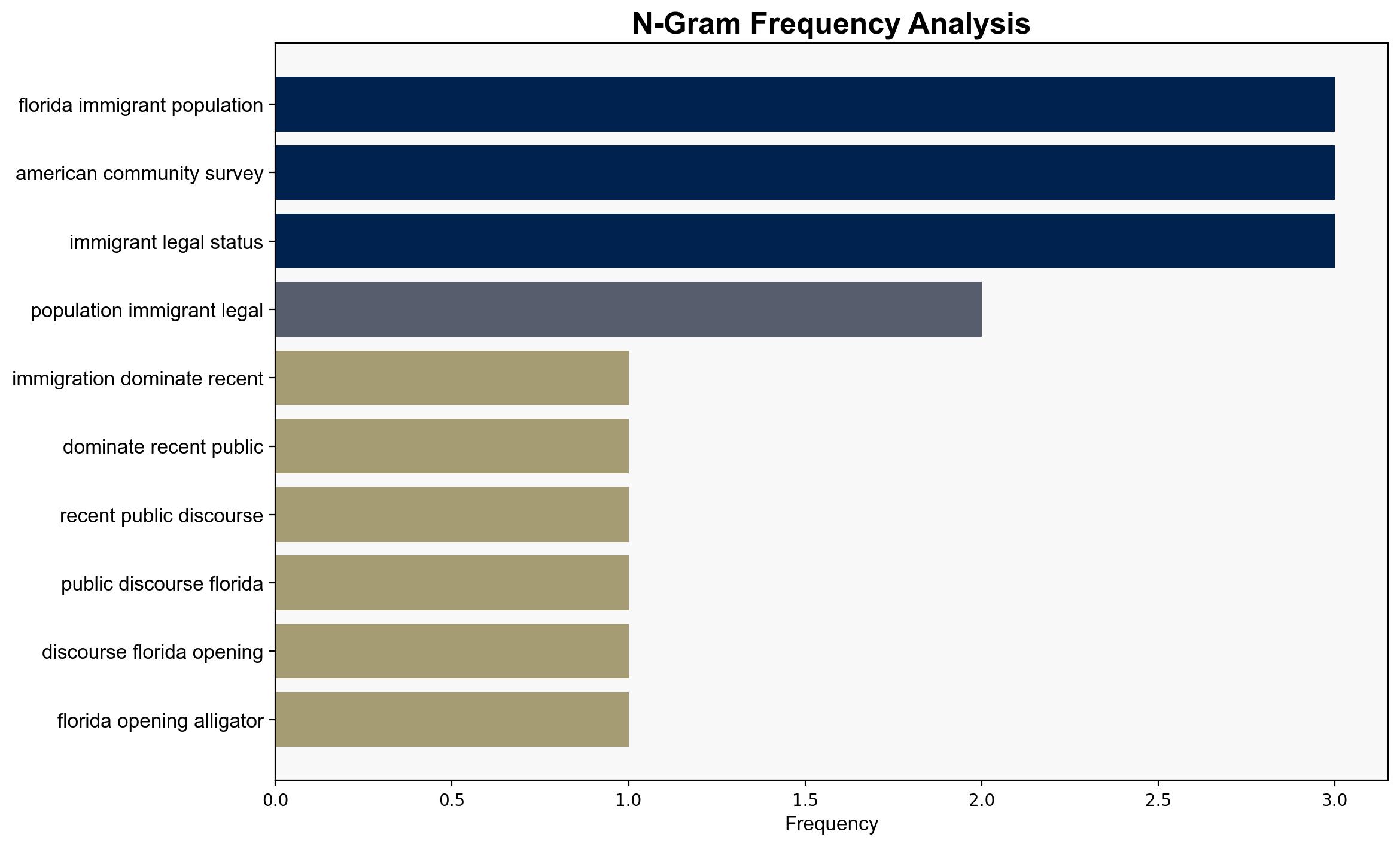Unpacking Floridas immigration trends demographers take a closer look at the legal and undocumented population – The Conversation Africa
Published on: 2025-07-29
Intelligence Report: Unpacking Florida’s Immigration Trends – The Conversation Africa
1. BLUF (Bottom Line Up Front)
The most supported hypothesis is that Florida’s immigration trends, characterized by both legal and undocumented populations, play a crucial role in the state’s economic vitality. This is despite political narratives framing immigration as a crisis. Confidence level: Moderate. Recommended action: Develop policies that balance immigration control with economic needs, ensuring that the workforce remains robust while addressing security concerns.
2. Competing Hypotheses
1. **Hypothesis A**: Florida’s immigration trends are primarily driven by economic opportunities, with immigrants, both legal and undocumented, significantly contributing to the state’s economy, particularly in essential sectors.
2. **Hypothesis B**: Florida’s immigration trends are a result of political and social factors, with the state experiencing an immigration crisis that necessitates stringent control measures to maintain order and security.
Using ACH 2.0, Hypothesis A is better supported by the data, which highlights the economic contributions of immigrants and the low unemployment rate among them, suggesting that they are integral to Florida’s economic growth. Hypothesis B is less supported due to the lack of evidence of an actual crisis as opposed to political rhetoric.
3. Key Assumptions and Red Flags
– **Assumptions**: Hypothesis A assumes that economic contributions outweigh potential social and security challenges. Hypothesis B assumes that the perceived crisis is based on factual data rather than political narratives.
– **Red Flags**: Potential bias in data interpretation, particularly if political agendas influence the portrayal of immigration trends. Lack of detailed data on the impact of undocumented immigrants on public resources.
4. Implications and Strategic Risks
– **Economic Risks**: Over-restrictive immigration policies could jeopardize sectors reliant on immigrant labor, leading to economic downturns.
– **Social Risks**: Heightened political rhetoric may increase social tensions and xenophobia.
– **Geopolitical Risks**: Florida’s policies could influence national immigration debates, impacting international relations, especially with countries like Cuba and Venezuela.
5. Recommendations and Outlook
- **Mitigation**: Implement balanced immigration policies that support economic needs while enhancing border security.
- **Opportunities**: Leverage immigrant contributions to boost sectors like agriculture and construction.
- **Scenario Projections**:
– **Best Case**: Policies enhance economic growth and social cohesion.
– **Worst Case**: Economic decline due to labor shortages and increased social unrest.
– **Most Likely**: Continued economic contribution with moderate political tension.
6. Key Individuals and Entities
– Ron DeSantis (Governor of Florida)
7. Thematic Tags
national security threats, economic impact, immigration policy, regional focus





